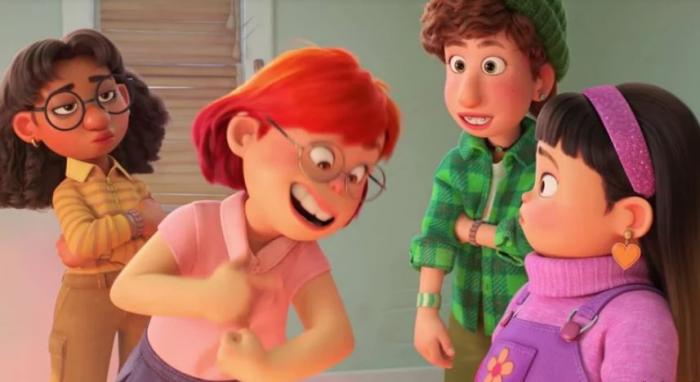A few days after its premiere on March 11 on the Disney+ platform, the North American animated film Turning RedOr simply Red (Dome Shi)already provokes singular postures.
It is not common for a product of its characteristics -inscribed in the adventure comedy- to produce itching and opinions as radical as that of the renowned youtuber Sean Chandler, who described it as alienating and strange, in addition to ensuring that only a small number could identify with it. segment of the population.
Why would a man, middle-aged and white, feel this way in front of a film whose main protagonist is a girl?
It happens that little Mei Lee, 13 years old, belongs to a traditional Chinese family living in Canada, where a secret is kept that must remain locked up; otherwise, she could cause great havoc in her life and in the lives of others.
What at first was considered a blessing, today is assumed as an inconvenience.
Each woman in this family can turn into a huge red panda when her emotions are shaken, once she reaches the age where she leaves childhood behind to enter puberty.
Yes, indeed, the first menstruation, menarche, rule, period or any other expression used to define it, and that in this film, produced by the Pixar animation studios, has been represented by a wide range of symbols, from a delicate flower from red petals to the moon of the same color, lady of the firmament every 28 days.
Net consequently dares to show packages of sanitary pads and a thermal bag of water to relieve menstrual cramps, addressing for the first time such a significant moment in a woman’s life.
The slap in the cheek of Western patriarchy lies in planting such objects, so ingrainedly linked to adulthood already almost rituals related to the reproductive capacity that women practice in the most absolute privacy, in a play for a “child” audience.
And it dares more: it dares to put the word “sexy” in the mouth of a 13-year-old girl, and to recognize that at that age sexual awakening, incipient desire, as well as the first approximations to motherhood, clearly understood as the result of the man-woman union, are established realities, until concluding that the successful transit towards full maturity goes through its normalization.
Walt Disney Pictures has never gone this far. Although it must be recognized that the film giant has taken steps in the direction of diversity with stories set far from the usual settings, its too progressive attempts are often frustrated, as when it was impossible to openly address Elsa’s sexual identity in the film. second installment of the successful Frozen.
For this and for that pathetic blush that the demystified body of a woman still provokes in any counter-hegemonic story, they do not forgive Net tell, even in a metaphorical key, the “intimate things” of a teenager, which in this case have as a backdrop the city of Toronto, year 2002, and the exquisitely light soundtrack of a pop quartet.
They do not forgive it —how to do it?— for being a film made for and by women (direction, script, production and animation), until it became one of the most daring of this century.
This film takes up the reflective existentialist tone with which the public was able to gloat in Soulalthough this time loaded with more spectacular adventures typical of the genre, and the innocence of four girls united by a close friendship, despite their differences.
The idea of transforming into a red panda, in a clear allusion to the color of the ruler and to the wild nature that lurks behind the socially accepted canons for the female model, coincides, in a certain sense, with the fundamental postulate of the book Women Who Run with Wolves.


In that work, the psychoanalyst Clarissa Pinkola Estés argues that “not insisting on following your own rhythm, feeling self-conscious, being separated from your own revivification, dragged towards domestication, intellectualism, work or inertia because this is the safest place for someone who has lost her instincts” are emotional symptoms of a break with the wild force of the female psyche.
And although it is menstruation leitmotiv of its plot, Net delves into the construction of the identity of the young woman, her relationship with the mother as a repressive figure, the management of the expectations of others, the search and finally the encounter of the inner voice that defines her as an independent being.
Based on elements common to more than half the planet (in response to youtuber Chandler’s concern), the excellent animation reinforces the halo of the mystical and the mystery that inhabits the so-called weaker sex, and constitutes an exemplary denunciation of the stigma of stain, shame and dirt that must be kept in the intimate space of the home, in contrast to the masculine sign, to whom the public domain has been given.
Consequently, locking up or letting the beast go free, whether or not to be the perfect daughter by her overprotective mother’s standards, is a decision that only Mei Lee can make.
Domee Shi, the first woman to direct a Pixar film, already earned recognition from the academy with an Oscar in 2008 for her animated short Beamalso on the figure of the woman focused on motherhood, and it would not be surprising if this or other recognitions were reserved for her due to her direction in Net.
The film is available to the Cuban public on the Picta platform. There are no reasons to miss it.















